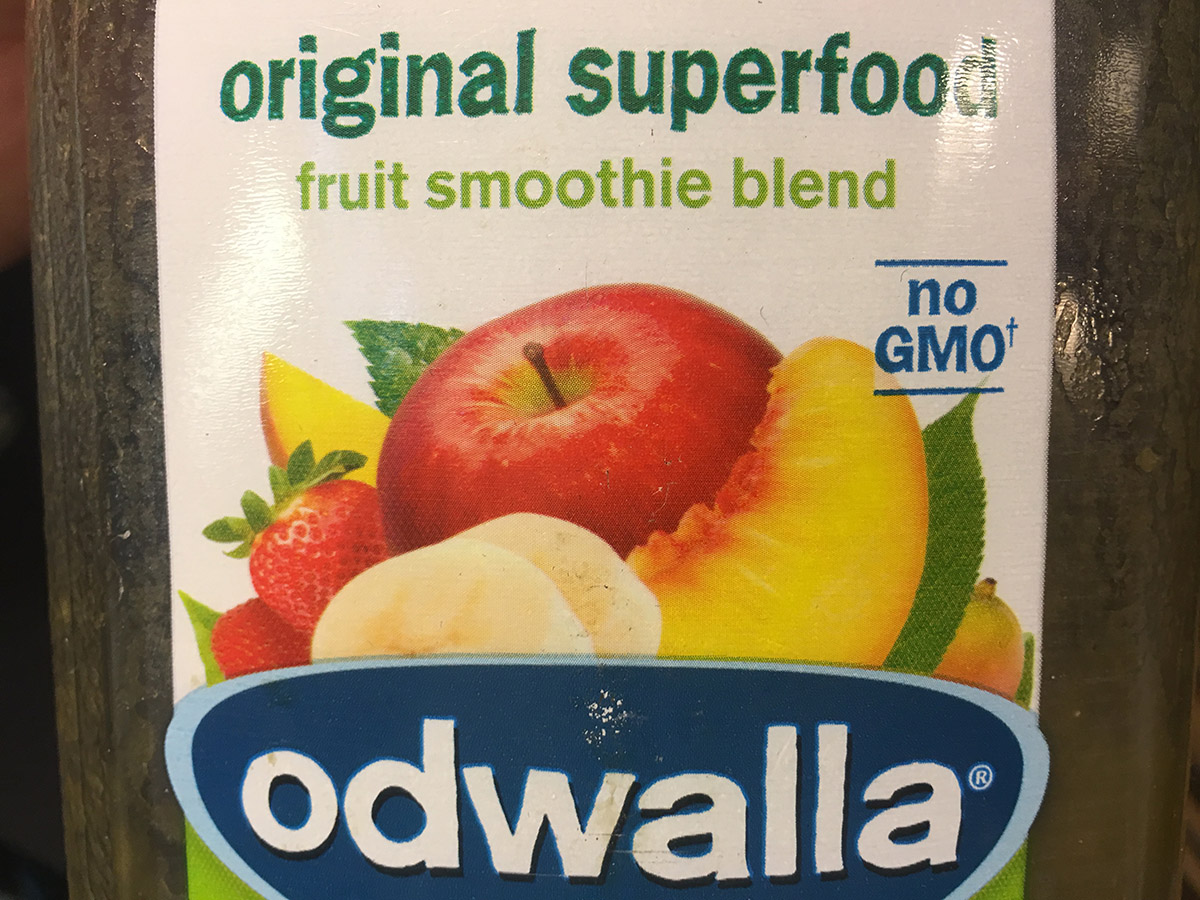Inside the Massachusetts Bill to Label Genetically Modified Foods

A GMO label in action. Photo by Garrett Quinn
A bill that will require the labeling of food containing genetically modified ingredients advanced to the House Ways and Means Committee on Wednesday, giving hope to consumer advocates who are crusading for the people for a second consecutive legislative session.
The bill, H 3242, was briefly held for review in House Speaker Robert DeLeo’s office before moving forward in the legislative process. Even though this bill has the support of nearly three-quarters of the legislature in the form of co-sponsor, its fate is largely unknown. If history is a guide, a similar bill died in the House Committee on Ways and Means during the previous legislative cycle.
The bill, the Genetic Engineering Transparency Food and Seed Labeling Act, has changed since it was first filed, so what would it change if it became law?
H 3242 will require all food containing genetically modified ingredients offered for retail sale in Massachusetts to be identified with a “produced with genetic engineering” label in some form. If a label cannot be applied to the food item in question, a label will be displayed near the food for sale.
What other restrictions would this bill impose?
Foods with a “produced with genetic engineering” label would be blocked from displaying additional labeling that says the product is “natural,” “naturally grown,” “all natural,” or anything similar. Alcohol and food sold at restaurants and farmer’s markets would be exempt from the regulations.
Who will enforce this?
The Division of Public Health and local health boards will handle investigating the labeling, while the Division of Standards will be charged with enforcement. Violations of the law come with a $1,000-a-day fine.
How will we determine what is and what isn’t genetically modified?
Funny you should ask. The original text of H 3242 made the bill’s definitions of genetic engineering fall in line with internationally accepted standards currently used around the United States. The version of the bill that advanced to Ways and Means has been altered from the 2014-2015 version of the bill that died in committee.
This is important, advocates say, because it helps avoid a patchwork of state regulations that opponents can pick apart and exploit. A national set of standards on something like this would definitely be more practical, but that’s probably not happening anytime soon.
Are other states pursuing this kind of legislation?
Yes, it’s actually a big part of the push behind this. As you may have noticed, it’s difficult to get anything done in Washington, so advocates have moved to the laboratories of democracy—or, as they are more commonly known, states. The legislation contains a “trigger clause” that delays when it goes into effect. The bill requires two things to happen before it becomes law:
- At least five states (specifically, Maine, Vermont, Connecticut, New Hampshire, New York, or Rhode Island) have to pass identical legislation. Vermont, Maine, and Connecticut have already passed their own versions of this law.
- The combined population of the states with the law in place needs to top 20 million people.
Those provisions sound like what’s known as a poison pill.
It kind of is, yes, but not in the traditional sense. This just makes it really difficult for the law to ever become reality. It doesn’t make it unattractive to advocates. Remember, the bill could still be amended on the floor before passage.
Why do people want to kill this bill? What’s so bad about labeling foods clearly?
It’s a good idea to some, and a needless fear-mongering regulation to others.
There’s a lot of scientific disagreement over the dangers presented by GMOs. Some argue that GMO foods present a real and present threat to the integrity of the food chain, while others argue that they have helped increase production to unprecedented levels and reduce hunger.
Opponents of labeling claim the proposed labels are meant to unnecessarily scare and confuse the public into believing there is something unhealthy about genetically modified foods, while proponents just want consumers to be more informed when making a purchasing decision.


